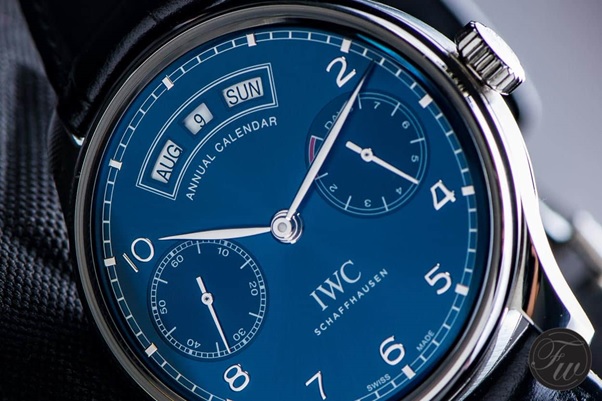IWC PORTIGIESER... A BRIEF HISTORY
They wouldn’t have known it at the time, but just a few weeks before WW2 two Portuguese businessmen leaving a watch factory in Switzerland were trend-setters in the world of watchmaking.
But it is their heritage on the seas, think of Vasco da Gama, Bartolomeau Dias or Ferdinand Magellen, that paved the way for one of the most iconic watches ever made…
These two gentleman, Rodrigues and Teixeira, wanted to commission IWC to create a new watch that served their interests, i.e. create a large wristwatch that would have the accuracy of a marine chronometer. It would take almost 50 years for the world to recognise the ingenuity of their vision.
In 1939, wristwatches were all about slim, rectangular, delicate Art Deco-inspired pieces, the new timepiece they’d commissioned was a gargantuan monster of a watch, by wartime standards anyway.
It was circular for a start, with huge dimensions, 46mm (most watches diameters were around 35mm), so it would have looked completely out of place and uncouth. This watch was to grow into a beautiful swan, but it would take time.
Their requirement, for a wristwatch that had the precision of a marine chronometer, meant that the only way of doing this, at the time, was to incorporate a pocket watch movement, a case of practicality over style. For want of a better name, the watch was christened Portugieser after the two gentlemen who had commissioned it.
Technically described for as a large wristwatch, the Portuguese incorporated a 74-calibre hunter pocket watch movement into a wristwatch (fortunately its crown was positioned on the right-hand side).
Its simple design allowed easy time reading – the hours were marked by alternating roman numerals and batons, and in keeping with the style of pocket watches at the time, a seconds sub dial was incorporated at 6pm. The resulting watch was something of a purists’ dream. The watch was not popular and very few were subsequently produced or sold and that could have been that…
Then, in 1993, with the acquisition of IWC by the Richemont Group and to celebrate the 125th anniversary of the brand, IWC began to pore through their archives.
This time with a fresh perspective. Sensing a potential trend and a future desire for large wristwatches, IWC remade the Portuguese, as it was then known, as a special limited edition.

They stuck rigidly to the original concept, the purist design, simple hour markers and dial layout and once again incorporated the movement of a pocket watch. The size, which was originally criticised began to set a trend which helped the growth of many prestige brands including Officine Panerai and Hublot to name a few.
At Salon International de la Haute Horlogerie (SIHH) in January 2016, IWC launched a new collection of Portugiesers to commemorate the 75th anniversary of its conception.
The most iconic of these is the Portugieser Annual Calendar (the difference between an Annual and Perpetual calendar is the fact that it only needs to be manually altered once a year). The dial is in a striking cobalt blue whilst the date is displayed elegantly in the 12 o’clock position.
On the dial itself are two sub dials, one demonstrating a power reserve of 7 days on the right-hand side of the watch and the other the seconds. The annual calendar and all parts of the watch can be simply controlled and amended on the crown.
And to honour their founder, F.A Jones, an American, the date has been laid out in the “American” tradition
Following their ambition to be a “vertical” manufacturer (a company that manufacture most of the components) IWC have developed their own movements to power this elegant new watch. Included in the Portuguese family are a further 10 different designs including a Perpetual Calendar, Tourbillon and Minute Repeater.
Perhaps in 75 years’ time they’ll be taken out of the archive, dusted down and reissued in a modern contemporary way.